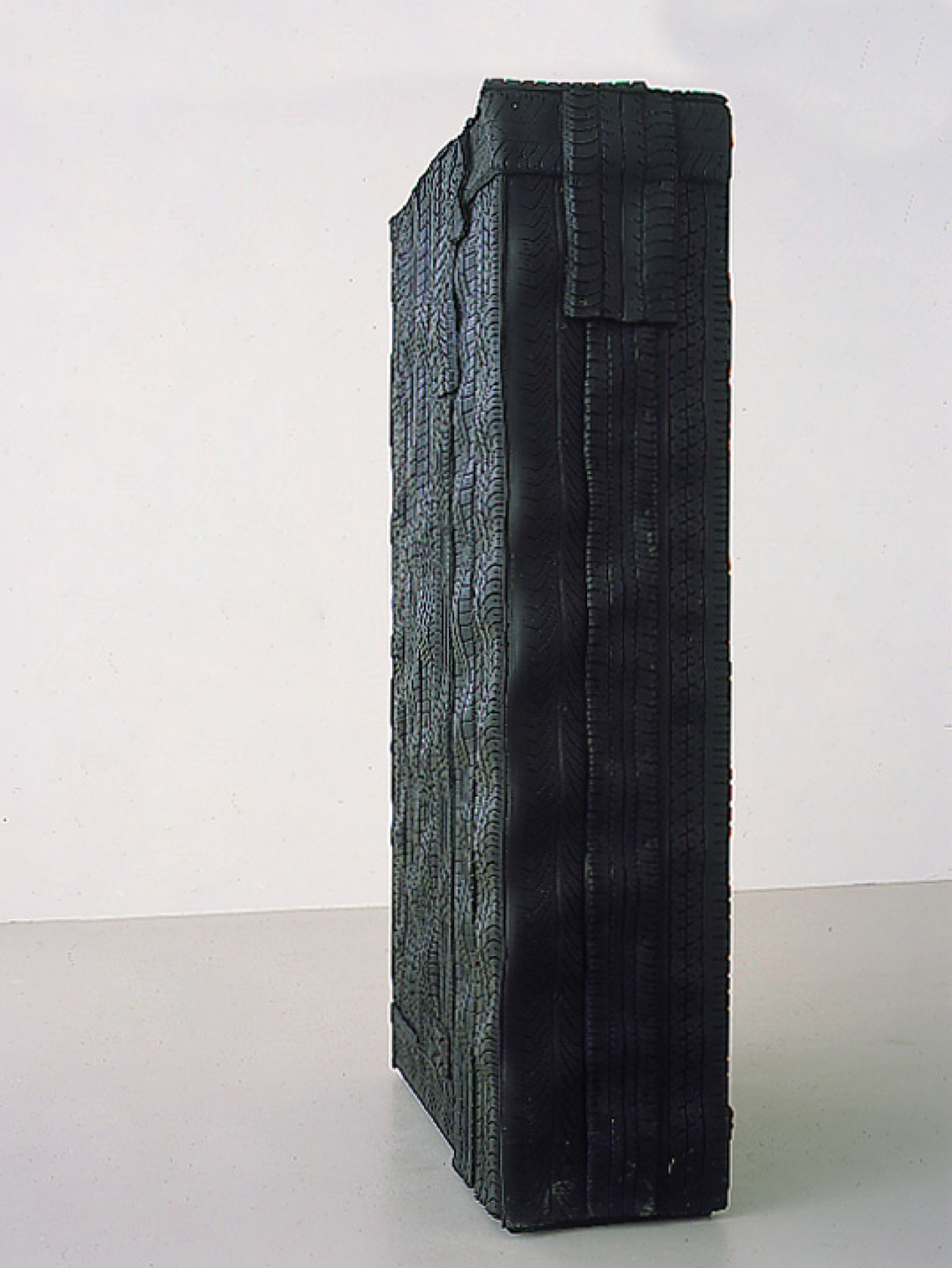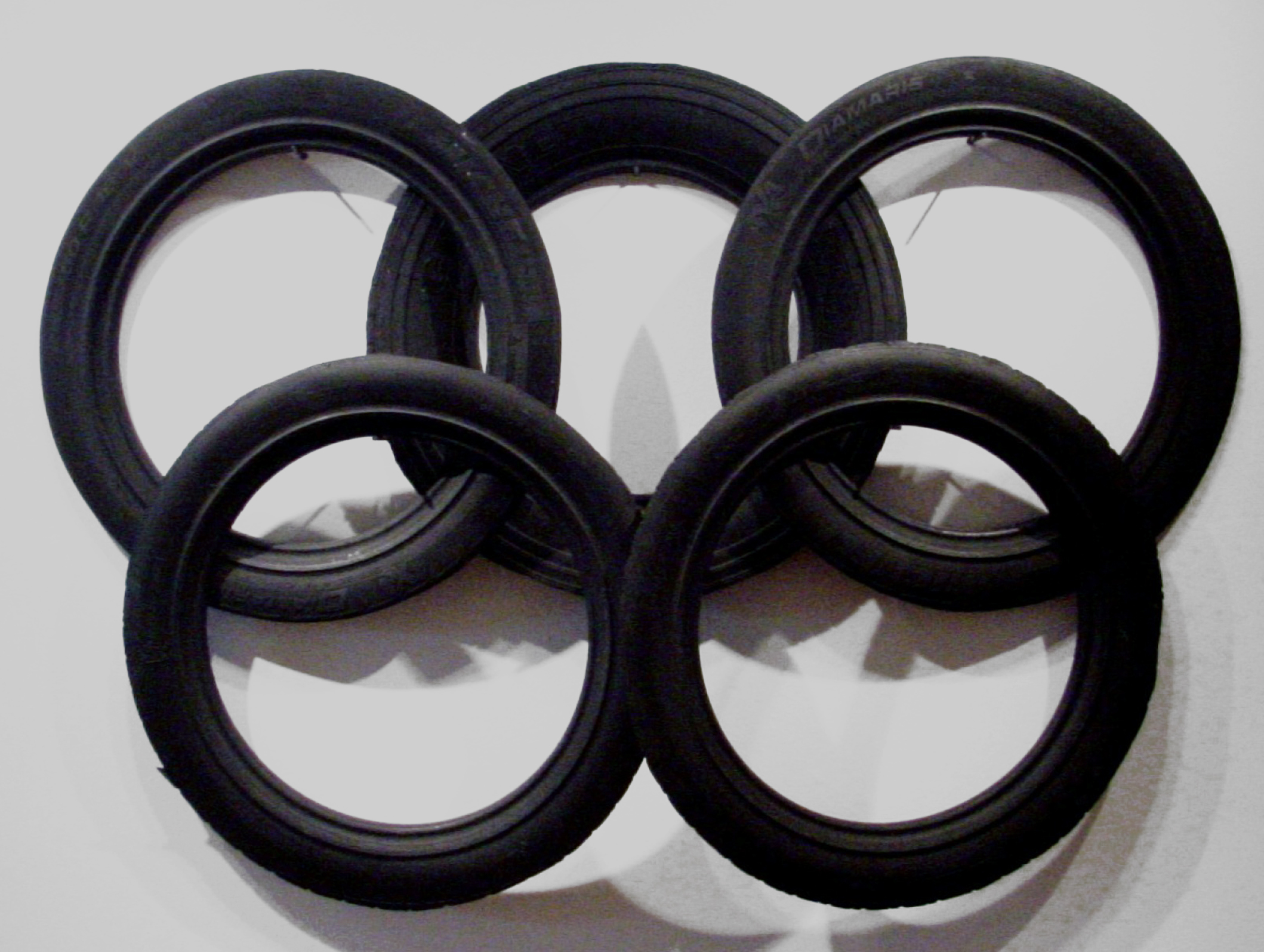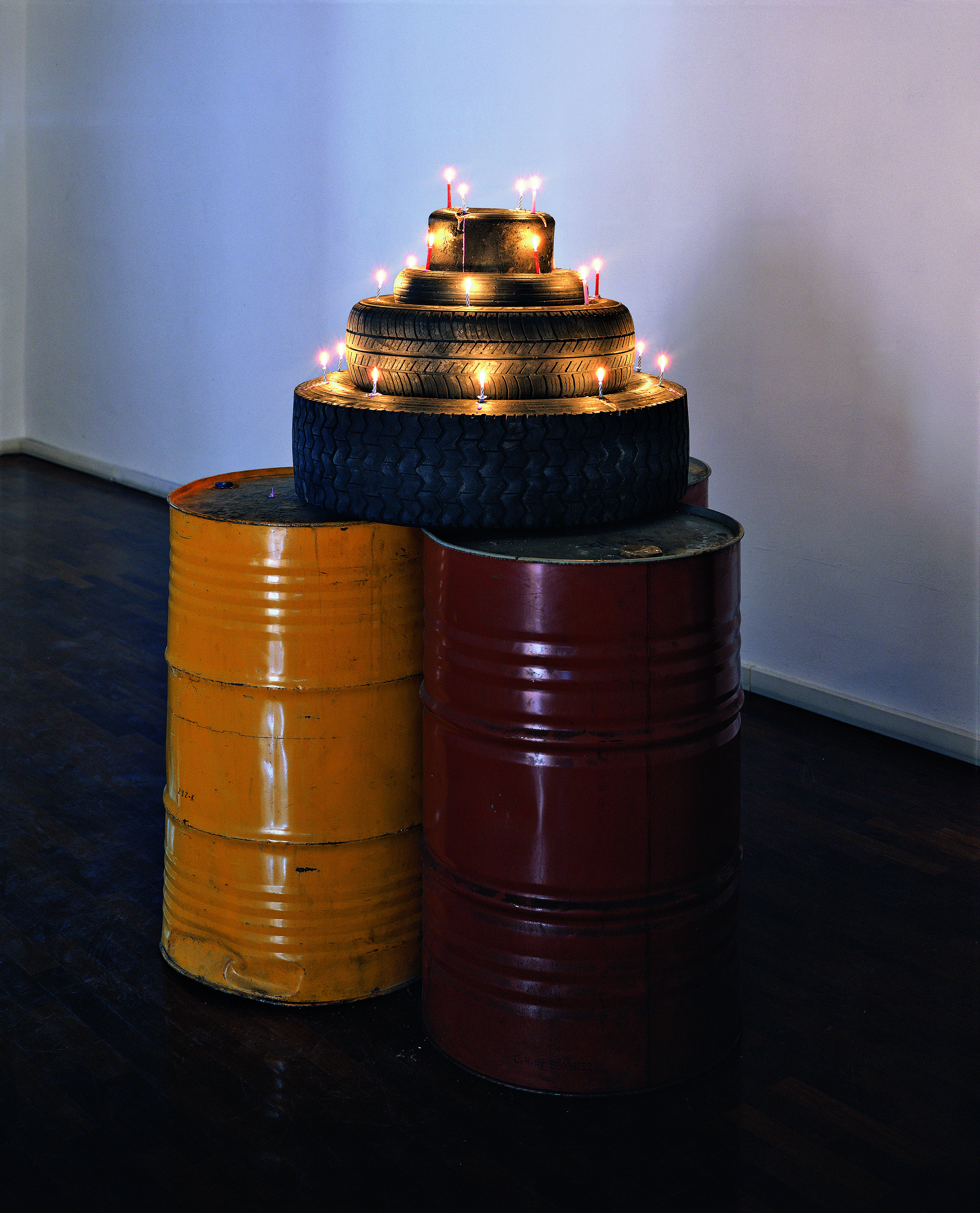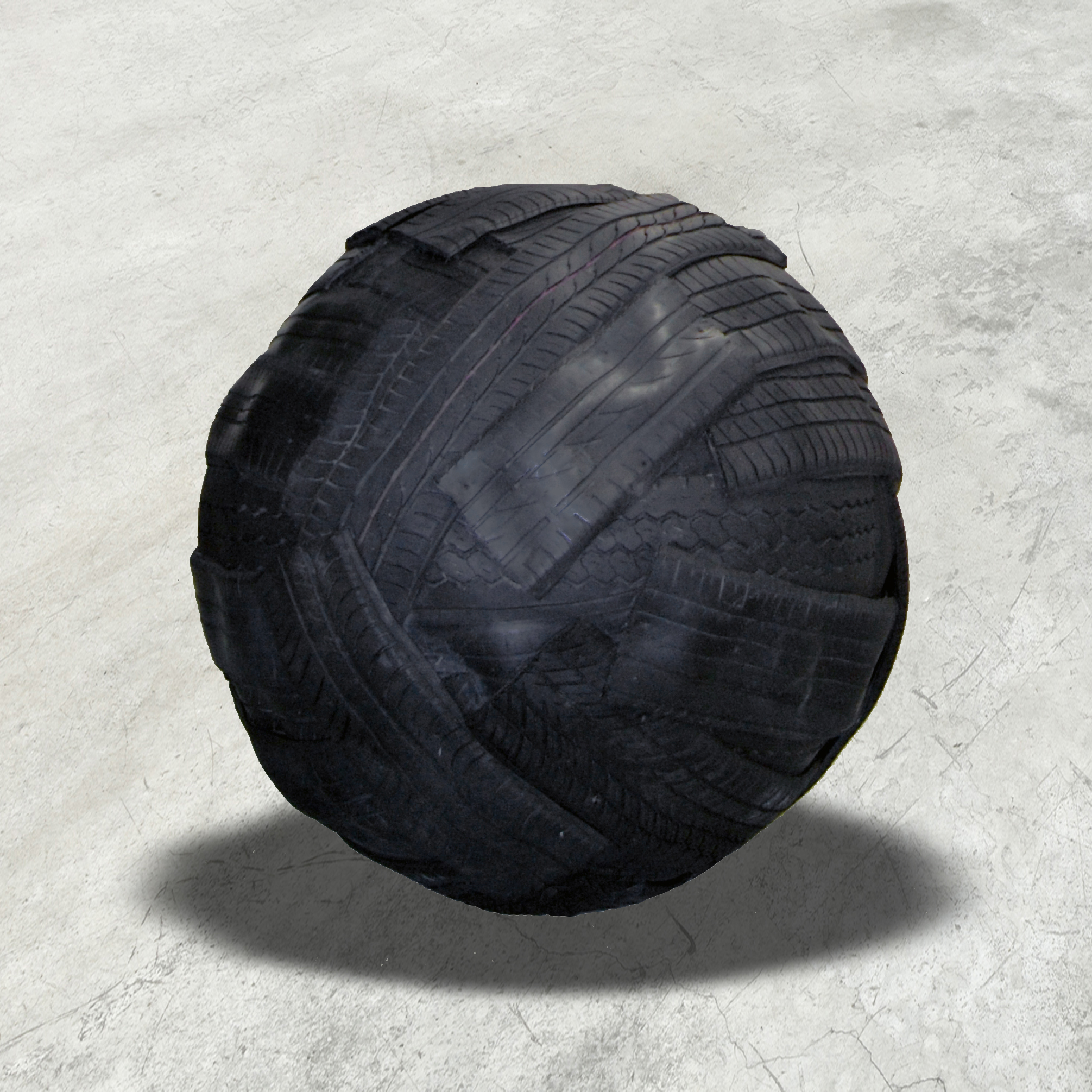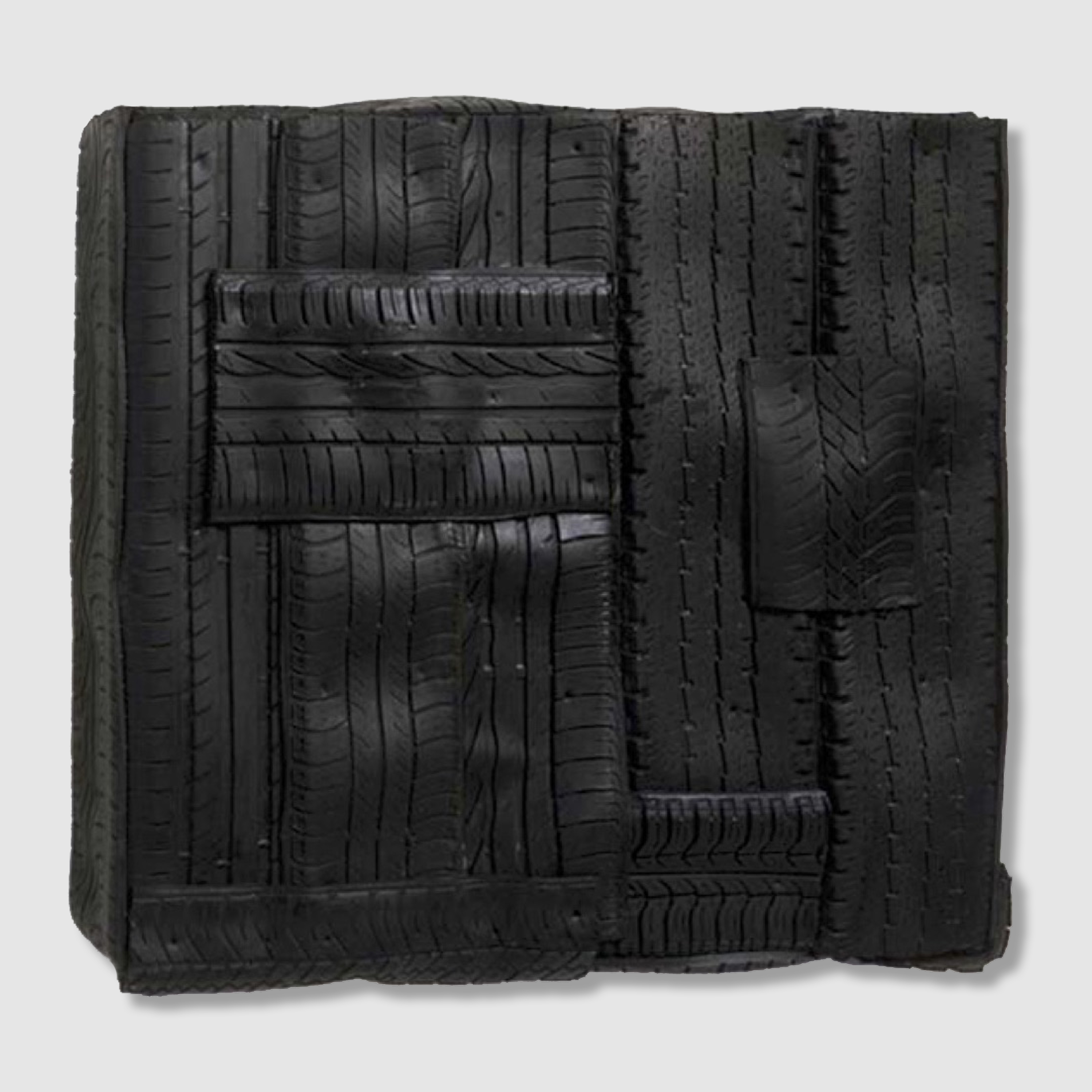Cardi Gallery
Più di una volta ho definito il mio ruolo d’artista come un virus; l’opera è qualcosa che rimane dentro, interiormente, che spinge l’inconscio verso nuove e inaspettate dimensioni di pensiero. Il carattere “politico” del mio lavoro è una delle possibili interpretazioni di quello che faccio, sicuramente incoraggiata dall’uso di immagini appartenenti alla cultura di massa. “L’arte è una opportunità politica” perché non ha bisogno di traduzioni o sottotitoli. Occorre però essere coscienti che la comunicazione in questo momento storico avviene attraverso miriadi di forme, di conseguenza creare immagini che sappiano sostenere un ruolo realmente decisivo diventa sempre più difficile. Anche per questo ho scelto di usare un bagaglio di simboli e iconologie che da un lato fanno parte della mia educazione, dall’altro sono iscritte alla conoscenza collettiva globale. In questo modo il pubblico ha la possibilità di giungere a una comprensione e a un’interpretazione più dirette. Penso che anche nei miei lavori più radicali ci sia una chiave di lettura accessibile a chiunque, in grado di aprire diverse porte che conducono a innumerevoli possibili punti di vista, azionando un meccanismo mentale che può trasformare un primitivo atteggiamento di pregiudizio. Un artista può creare una forma di comunicazione nuova non solo sul piano tecnico ma anche su quello del linguaggio. Ciò che mi interessa è spingere la gente a pensare, attaccando una struttura mentale viziata. Guardo con interesse ai fallimenti della società, li vedo come monumenti contemporanei. Un palazzo bombardato con le sue drammatiche macerie ha più potere di qualsiasi monumento. È nella mia filosofia pensare che le opere non siano tracce permanenti, ma memorie. Ho sempre lavorato sul concetto di passaggio del tempo, di memoria come Arte, presenza emotiva che ci accompagna nella vita.
Paolo Canevari.
More than once I’ve described my role as an artist like that of a virus; for me, the work has to be something that creates a mental shift, and drives the unconscious into new, unexpected realms. The “political” character of my work is just one of many possible interpretations of what I do. I naturally use images that are a part of popular culture, so as to offer a sociopolitical key by which to read the work. Art is a political opportunity because it doesn’t need any translation or subtitles. We have to be aware of the fact that communication, currently, takes place in a myriad of forms and ways. Consequently, it becomes increasingly difficult to create images that can really play a decisive role. That’s another reason I’ve chosen to “use” a toolkit of symbols and icons that are not only a part of my background, but are also part of the global collective conscience. This allows the public a more direct interpretation. I think that even in my most radical works there’s a way for everyone to read them—an interpretive key that opens various doors, which lead to countless possible viewpoints: this triggers a mental mechanism that can transform primitive prejudices. An artist can create a new form of communication—not only from a technical standpoint, but in terms of visual language, too—so what interests me most, ultimately, is the idea of pushing people to think by attacking their spoiled mental structures. I’m interested in looking at society’s failures—I view them as contemporary monuments. A bombed-out building and its dramatic debris will always be more powerful in my memory than any monument. Part of my philosophy is the thought that works aren’t permanent traces, rather they’re memories. I’ve always worked with the concept of time’s passage, of memory as “Art,” as an emotional presence that accompanies us throughout life.
Paolo Canevari.

